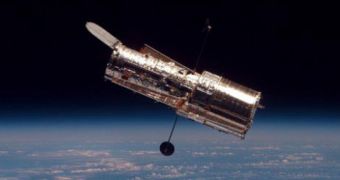Today, the attempts of repairing the glitch that has silenced the Hubble Space Telescope about 2 weeks ago have started. The ground technicians aim to revitalize some alternative computer components that have lied in a dormant state for over 18 years, since the $2 billion telescope was launched into space.
A vast series of complex code lines has been sent towards the device early today by 40 of NASA's engineers from the Goddard Space Flight Center in Greenbelt, Maryland, in order to “wake up” the computer components that will replace those who broke down recently. The information will be rerouted through the alternative system, which will still be maintained even after the broken parts will be replaced by newer ones.
This replacement mission, the 5th one in service to Hubble, was delayed for next year's February, since there is no perfect replica for “Side B,” the spare part also known as the Science Instrument/Command & Data Handling (SI/C&DH) system that will take the place of the broken system. This postponement will likely cost NASA $10 million each month, as its officials have recently declared.
Although the rest of Hubble is functioning at the expected parameters, this malfunction prevents data from being obtained. The telescope will be forced to enter a safe mode for the 6th time during its mission spanning almost 2 decades, as the experts perform the rerouting procedures. According to Art Whipple, the Hubble Space Telescope program manager, “[there] is obviously a possibility that things will not come up.” However, since “there's very little aging that goes on with an unpowered component in space,” which is “actually a very benign storage environment,” he believes in the success of the attempt.
Other satellite components that have been stored in space performed admirably after being switched on 10 to 15 years later. Also, there is nothing that the technicians could do that would worsen the state of the glitch. If all goes well, though, the old telescope will resume its crucial scientific observations on Friday, NASA officials have revealed.

 14 DAY TRIAL //
14 DAY TRIAL //